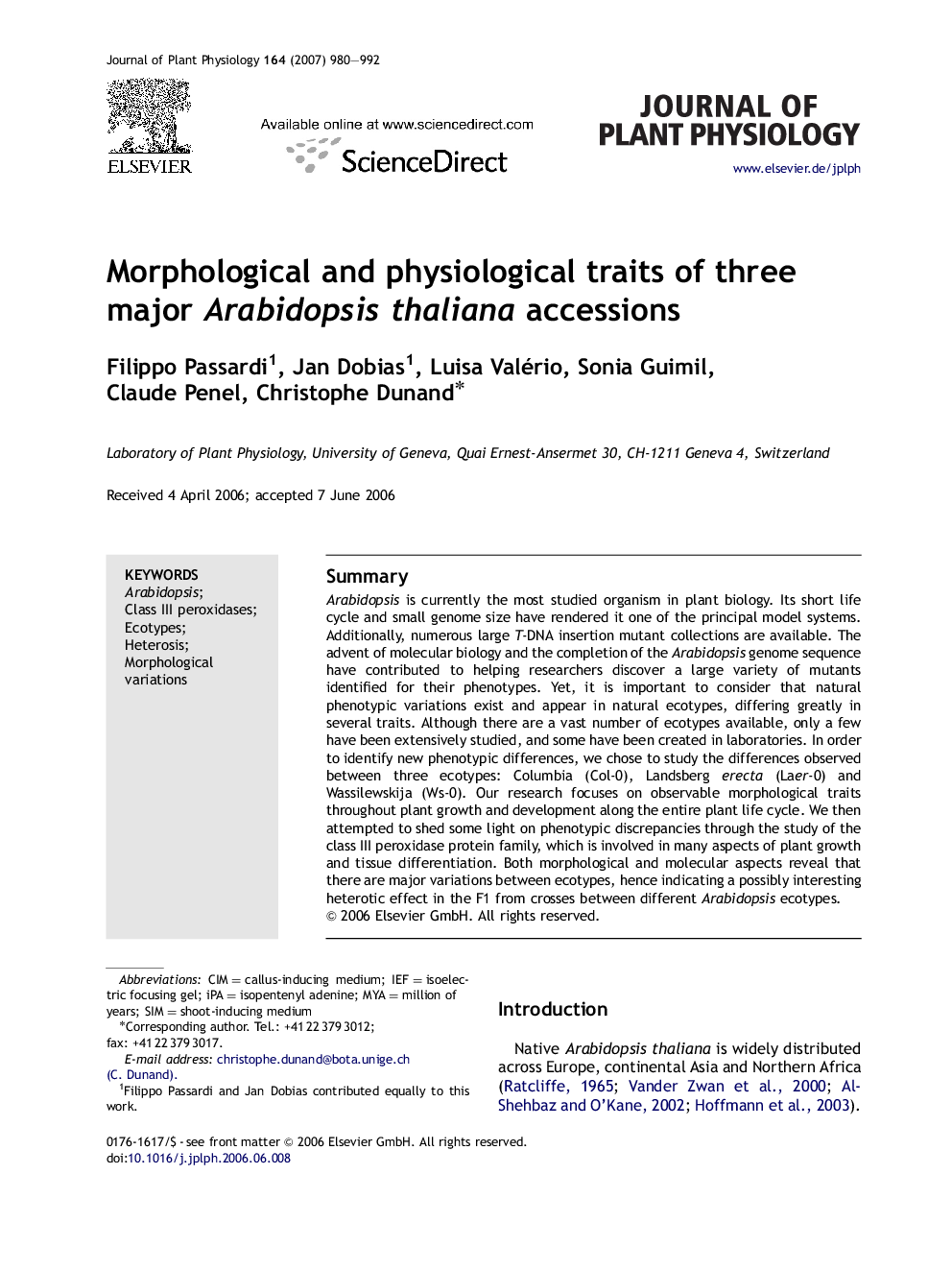| Article ID | Journal | Published Year | Pages | File Type |
|---|---|---|---|---|
| 2057452 | Journal of Plant Physiology | 2007 | 13 Pages |
SummaryArabidopsis is currently the most studied organism in plant biology. Its short life cycle and small genome size have rendered it one of the principal model systems. Additionally, numerous large T-DNA insertion mutant collections are available. The advent of molecular biology and the completion of the Arabidopsis genome sequence have contributed to helping researchers discover a large variety of mutants identified for their phenotypes. Yet, it is important to consider that natural phenotypic variations exist and appear in natural ecotypes, differing greatly in several traits. Although there are a vast number of ecotypes available, only a few have been extensively studied, and some have been created in laboratories. In order to identify new phenotypic differences, we chose to study the differences observed between three ecotypes: Columbia (Col-0), Landsberg erecta (Laer-0) and Wassilewskija (Ws-0). Our research focuses on observable morphological traits throughout plant growth and development along the entire plant life cycle. We then attempted to shed some light on phenotypic discrepancies through the study of the class III peroxidase protein family, which is involved in many aspects of plant growth and tissue differentiation. Both morphological and molecular aspects reveal that there are major variations between ecotypes, hence indicating a possibly interesting heterotic effect in the F1 from crosses between different Arabidopsis ecotypes.
